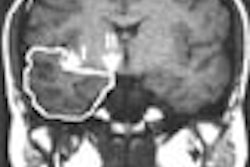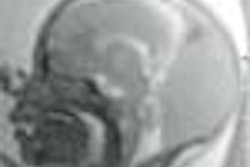The MRI market has been characterized by fast-paced, continuous technological innovation from the moment Fonar installed the first commercial system in 1980. Since then, MRI scanners have become faster, smaller, quieter, safer, and easier to use.
However, due to high start-up costs and competition from less expensive imaging modalities, market saturation has never been reached. And year after year, MRI products penetrate new and important market spaces. As a result, the market for MRI systems is one of the best-performing segments in the medical imaging industry. The U.S. MRI market first surpassed the $1 billion mark in 1999, and very healthy growth rates are predicted for the foreseeable future.
Every year new technological enhancements are developed for MRI, increasing its versatility and its attractiveness to end-users. MRI can now be used to image nearly every type of tissue in the body, and has proven effective in many applications that have traditionally been dominated by x-ray based modalities, such as cardiovascular and gastrointestinal imaging.
Conflicting preferences
In concert with this technological progress has been tremendous growth in freestanding imaging centers that specialize in MRI, and a corresponding surge in the number of patients who are willing to pay out-of-pocket for MRI exams. These two trends have given rise to an important dynamic: patients have educated themselves about MRI, and have developed very pronounced preferences for the type of MRI system they want for their imaging exams.
This wouldn't be a problem were it not for conflicting preferences between patients and clinicians. Radiologists generally dislike low- and mid-field scanners, favoring high-field systems due to their superior image quality, faster acquisition speed, and wider range of applications.
However, most patients have a strong aversion to high-field systems, which they view as dark, forbidding "tunnels." Because high-field (1 tesla and up) systems have typically used closed magnets, many patients find them uncomfortable. A sizable minority of patients, including children, the claustrophobic, and the morbidly obese, cannot tolerate insertion into a closed system.
So as a rule, patients prefer open MRI systems. Until very recently, however, there was no MRI model on the market that could satisfy both patients and radiologists.
Outpatient service providers have spent considerable effort telling patients that open MRI is more comfortable than closed MRI. Patients request open MRI examinations at a much higher rate than might be expected due to clinical obesity or claustrophobia. Therefore, hospitals and outpatient service providers have sought to foster public awareness to publicize their open systems.
Patients are generally aware that MRI offers a high degree of diagnostic accuracy without exposure to potentially harmful x-ray radiation. The public also knows that MRI can lead to early detection and treatment of many diseases, and, in many instances, can eliminate the need for more risky procedures such as exploratory surgery or biopsy.
Thus, the end-users fostered an environment that encouraged patients to seek out open MRI systems. Unfortunately, this often brought them afoul of the limitations of open MRI technology, as these systems did not support the many procedures that require high-field speed and power.
A shift to open
Clearly, openness and field strength are both key to the MRI market. Responding to both sets of needs, Siemens Medical Solutions of Iselin, NJ, and Philips Medical Systems of Bothell, WA, have developed the first open MRI systems with a field strength of 1 tesla. Siemens’ Magnetom Rhapsody model was the first open high-field system to receive FDA approval (in January 2001), while Philips’ Panorama 1.0T is still under FDA review. Frost & Sullivan expects other manufacturers, such as GE Medical Systems of Waukesha, WI, and Hitachi Medical Systems America of Twinsburg, OH, to join them.
With the first generation of open high-field MRI systems on the horizon, the conflict between patients and physicians regarding open versus closed MRI will soon end. Therefore, we expect exceptionally strong demand for open high-field systems, providing consistent growth for the open MRI market segment through the coming years.
The openness of a facility's MRI system has become a competitive issue, which can cause facilities without open units to lose customers. Based on initial projections of earnings accrued through sales of open high-field MRI systems, the longer a manufacturer takes to come to market with an open high-field product, the more revenues the manufacturer stands to lose out on.
As patient demand for open systems grows, companies that are able to come to market with open high-field products early are likely to enjoy a bonus, while late-comers will undoubtedly lose out on early revenues, by as much as tens of millions of dollars a year.
A competitive edge for vendors
While Philips, along with GE and Fonar, led the development of open mid-field systems, Siemens' competitors have, to date, lagged in bringing their open high-field systems to market. Therefore, these companies remain at a competitive disadvantage every day that passes without their open high-field systems on the market. Engineering, testing, and clinical data gathering efforts must be rallied in order to overcome the challenges involved in quickly bringing open high-field systems to market.
This is also one of those rare cases in the medical imaging industry where the market is very eager and willing to spend money on a sizeable capital investment. Availability problems must be overcome by outsourcing the production of important components to reliable vendors, and re-engineering the production process in order to anticipate customer orders.
Customers regularly complain about the average six-month waiting time for delivery of a new MRI system. This problem must be avoided with the introduction of open high-field systems. Any company that can promise and deliver a shorter waiting time from order to delivery will be certain to enjoy a strong leadership position in this crucial new segment.
By Antonio GarciaAuntMinnie.com contributing editor
November 23, 2001
Antonio García is a medical imaging industry analyst at Frost & Sullivan, a San Jose, CA-based market consulting and training firm. The data and analysis in this article are included in a recently published Frost & Sullivan report on the MRI market. For more information, visit healthcare.frost.com
Related Reading
Open MRI scanners drive market growth, October 15, 2001
Mammography market stands at crossroads, September 25, 2001
Reimbursement drives huge growth in PET, August 7, 2001
Copyright © 2001 AuntMinnie.com



















